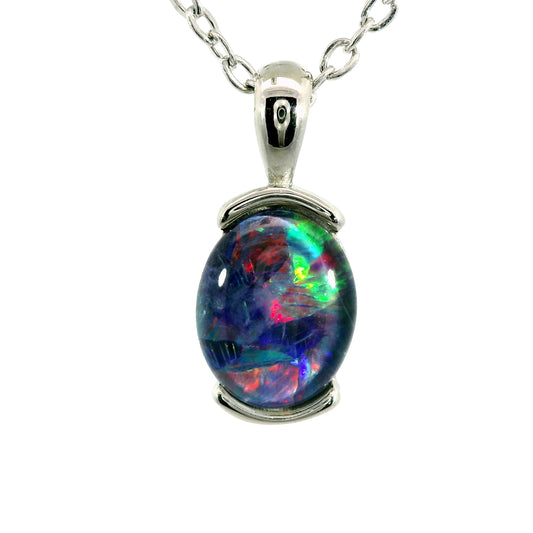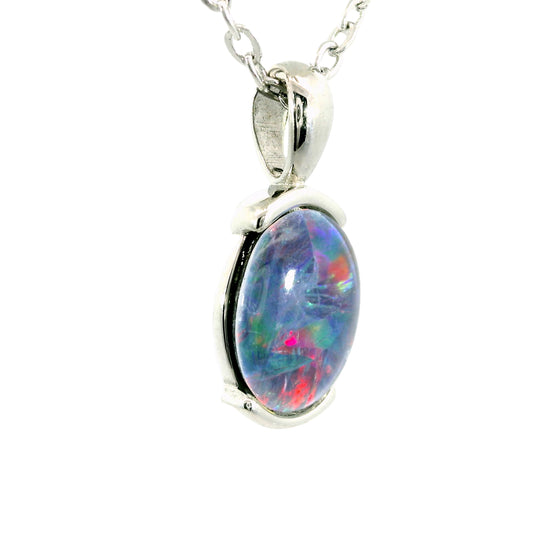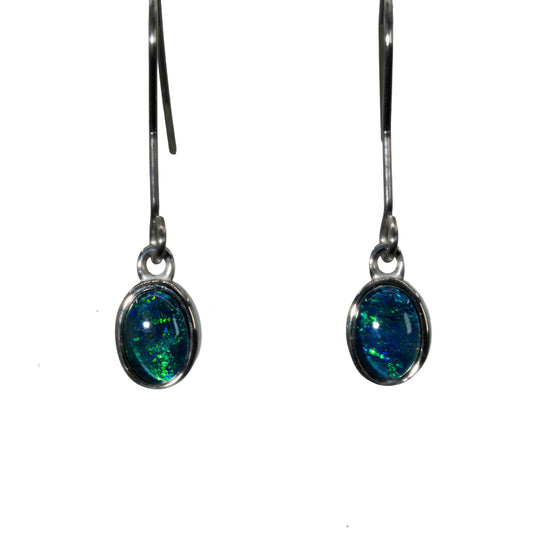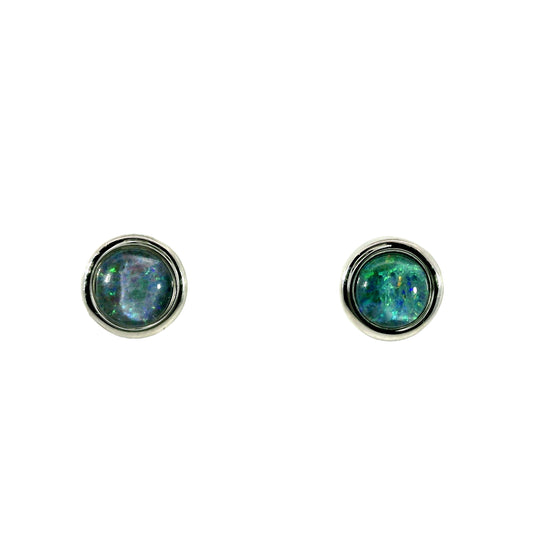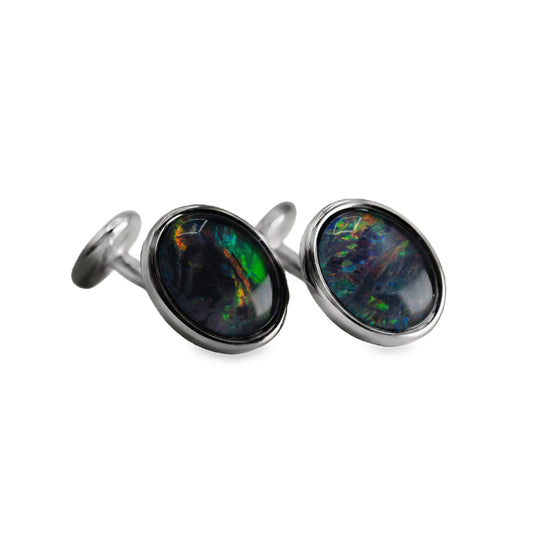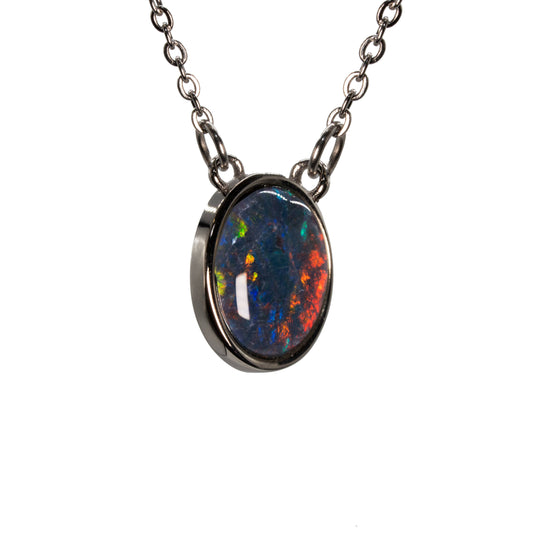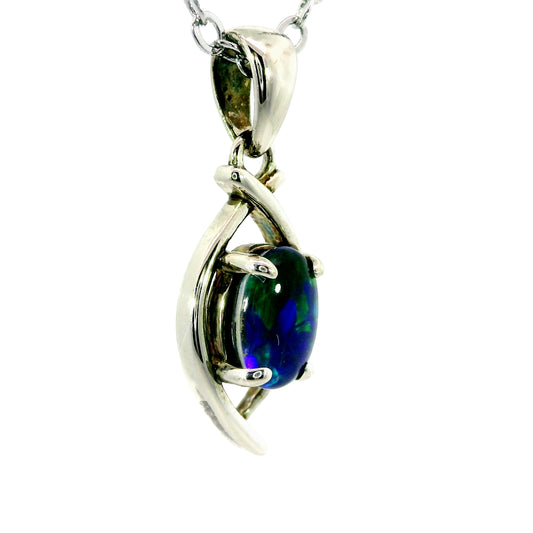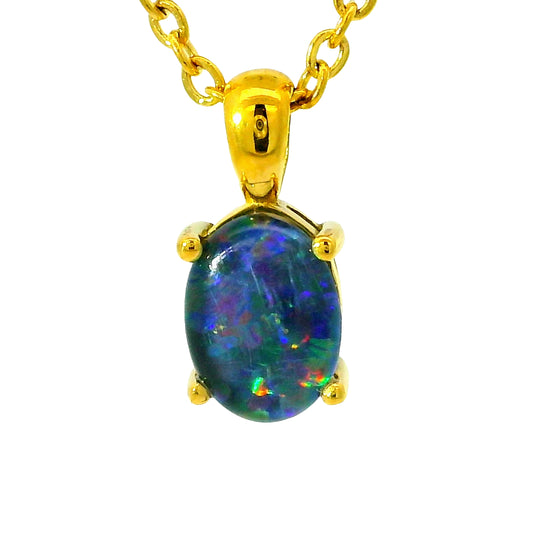Thundercloud behind a rainbow: black opal

There are several types of opal, including black (dark) opal, boulder opal, light (white) opal, and composite opal. Opal is precious that 30 tons of Opal “dirt” produces get 1 ton of “rough Opal potch” which will ultimately produce only one Opal gemstone; however, the black opal is much rarer than any other types of gems. Black Opal with colour and pattern is 5000x rarer than diamond.
The magical “black”

Black opal does not mean its appearance is completely black (it will also lose value when it is all black), the “black” only refers to the general body tone of the stone. Black opals have carbon and iron oxide trace elements present, which cause the unusual darkness of the stone. Because of their dark body tone, the rainbow colours in a black opal stand out more stunning beauty than lighter opals. Besides, the type, colour, size of precious Opal are factors that determine the price paid for the gemstone, so this vibrancy of colour makes black opal the most valuable form of all opals.

In general, the opal cutters use the N tone scale to examine the degree of darkness of the body tone that is one of the important characteristics to determine the value of opal. A black body colour, especially the deep “N1” jet-black, is more valuable than a grey or a light body tone, when all other factors of opal (variety, background, transparency, spectrum, tone, origin, distribution, inclusions, carat weight etc) are generally equal.
Pattern
Patterns in opal are very important. There are numerous “named” patterns; ‘pinfire’, ‘broad flash’, ‘harlequin’, ‘rolling-flash’ and ‘mackerel’ just to name a few. This is where the molecular structure is so perfect it provides a repetitive display creating a pattern. These patterns are very rare and something to look for when customers purchase on opal. At this moment, the “darkness” of the body tone is very important to the effect of pattern, deep black tone causes the diffraction of white light into the colours of the spectrum to appear far more vivid and intense than with light opal base tones.

pattern list of opal
The Harlequin Pattern in Gem Black Opal is exceptionally rare. Only 0.000001% of the top gems are graced with this exquisite and rarely formed pattern. A phenomenon of creation leads to billions of perfectly aligned molecules that form elongated colour units as the white light is split with a surgeons precision into the colours of the spectrum. Very rarely they form into a pattern that reflects harlequin squares. This is truly “God’s Art”.
Origin of black opal
Black opals are mostly mined in Lightning Ridge, in northern New South Wales. Although White Cliffs is Australia's oldest commercial opal field, Lightning Ridge is famous for the black opal and hundreds of millions of dollars’ worth of black opals have been found there. The Ridge is in Northern New South Wales 768km from Sydney, which lies in the Surat Basin, which is part of the vast Great Australian Basin. It is the special topographical structure of the basin that allows the underground sediments to form the raw materials of opals after many years of crustal movement.
There is a legend about the Lighting Ridge from the aborigines which explained the found of opal, it said a huge wheel of fire fell to earth and sprayed the countryside with brilliant coloured stones. As for the naming of the Ridge, it is also a dramatic story. Frank Leechman's The Opal Book (1961) explains how Lightning Ridge got its name. He tells how one night a shepherd, his dog and a large mob of sheep were sheltering among the trees on the ridge from a wild storm. Suddenly, a mighty bolt of lightning struck right in the middle of the flock, killing over 200 sheep, the others scattering in terror.
Opal was discovered at Lightning Ridge in the late 1880s, and the mining started from about 1900s. Most opal at the Ridge is found between 6 and 18 metres from the surface – not so deep that they are out of the reach of smaller miners, but deep enough to make their mining hard work.
The Lighting Ridge has a population of about 1200 which is supplemented by over 80 000 visitors who arrive every year. The Opal Festival is held in the September–October NSW school holidays every year. Other annual events are the Easter Festival and the Opal and Gem Expo in July.
You can also see the video to learn more about black opal!
Black Opal from Graeme Blaiklock on Vimeo.
--------------------------------------------
Source:
Cody, A. and Cody, D., 2008. The Opal Story. Melbourne: Andrew and Damien Cody.
Resourcesandgeoscience.nsw.gov.au. 2020. About Lightning Ridge - NSW: Resources And Geoscience. [online] Available at: <https://www.resourcesandgeoscience.nsw.gov.au/landholders-and-community/opal-mining-for-community/about2> [Accessed 31 May 2020].
Resourcesandgeoscience.nsw.gov.au. 2020. About Opal - NSW Resources And Geoscience. [online] Available at: <https://www.resourcesandgeoscience.nsw.gov.au/miners-and-explorers/applications-and-approvals/opal-mining/about-opal> [Accessed 31 May 2020].












































































































